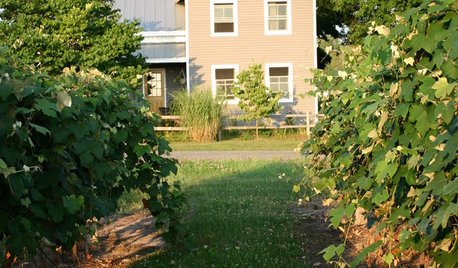Have Opportunity to Try Crossing Hellebores
mikeybob
19 years ago
Related Stories

GARDENING GUIDES15 Ideas to Try in Your Garden This Year
These gardening stories were tops among Houzz readers. Which ideas might you try this year?
Full Story
CURB APPEAL77 Front Doors to Welcome You Home
Crossing the threshold is an event with these doors in a gamut of styles
Full Story
ATTICS14 Tips for Decorating an Attic — Awkward Spots and All
Turn design challenges into opportunities with our decorating ideas for attics with steep slopes, dim light and more
Full Story
DECORATING GUIDESThe Dumbest Decorating Decisions I’ve Ever Made
Caution: Do not try these at home
Full Story
DECORATING GUIDES10 Ways to Hide That Air Conditioner
Feeling boxed in designing around your mini-split air conditioner? Try one of these clever disguises and distractions
Full Story
GARDENING GUIDESGreat Garden Combo: 3 Wonderful Plants for a Deer-Resistant Screen
Protect your privacy and keep deer at bay with a planting trio that turns a problem garden area into a highlight
Full Story
HOUZZ TOURSHouzz Tour: Family Builds Off the Grid Near the Cascade Mountains
Homeowners carefully construct a weekend home on 20 acres in remote northeast Washington
Full Story
SMALL HOMESTiny Houzz Tour: Living the Good Life Their Way
This owner-built home in Australia may be on the small side, but it provides the perfect space for the family’s big dreams to come true
Full Story
TRADITIONAL HOMESMy Houzz: Step Inside a Grand 1800s Victorian
A 7,000-square-foot historic estate returns to glory, thanks to loving renovations by a tireless Texas couple
Full Story






jgwoodard
mikeybobOriginal Author
Related Professionals
La Marque Landscape Architects & Landscape Designers · Salem Landscape Architects & Landscape Designers · Taylorsville Landscape Architects & Landscape Designers · Surprise Landscape Contractors · Bloomington Landscape Contractors · Brandon Landscape Contractors · Davidson Landscape Contractors · Essex Landscape Contractors · Huntington Landscape Contractors · Lemont Landscape Contractors · Riverhead Landscape Contractors · Tustin Landscape Contractors · Wethersfield Landscape Contractors · Lauderdale Lakes Landscape Contractors · Massapequa Siding & ExteriorsSeniorBalloon
mikeybobOriginal Author
gardengal48 (PNW Z8/9)
SeniorBalloon
gardengal48 (PNW Z8/9)
jgwoodard
mikeybobOriginal Author
jgwoodard
mikeybobOriginal Author
jgwoodard
mikeybobOriginal Author
jgwoodard
mikeybobOriginal Author
Greenmanplants
johandk